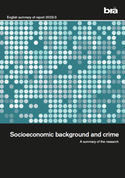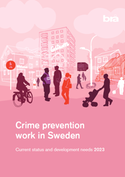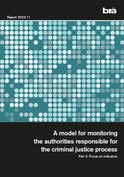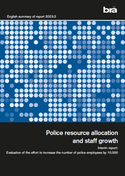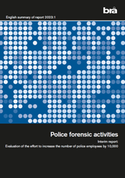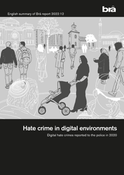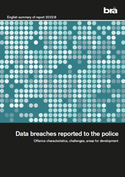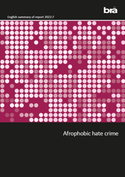School Survey on Crime 2021
On crime victimisation and participation in crime.
English summary of Brå report 2022:5
The overall purpose of this survey is to describe trends over time in self-reported exposure to crime and participation in crime among students in year 9. Year 9 is the final year of compulsory education in Sweden, with students aged 15–16. The report is descriptive in nature and therefore does not provide answers as to underlying factors behind being a victim of crime or committing crime. More detailed analyses and explanations of the results
may instead be presented in other more in-depth studies.
Summary
- Almost half the students report having been victims of an offence
The results of the 2021 School Survey on Crime show that 45 percent of the students stated that they had been victims of theft, assault, threats, robbery or a sexual offence at least once in the previous twelve months. This is a slightly lower proportion than in 2019, when 48 percent stated that they had been victims of these offences, and it is the lowest proportion recorded since
2015.
- Exposure to crime is common in the school environment
When asked where the incidents of victimisation had taken place, the results show that crime is prevalent in the school environment. This is the most common location for exposure to both minor and aggravated assault, as well as for offensive physical sexual behaviour among boys.
- Fear of crime has major consequences
In 2021 it was common for fear of crime to lead to students avoiding specific people or places, avoiding going out in the evenings or staying away fromschool for a whole day. It is most common for fear of crime to have some form of consequence among girls (57 percent compared with 44 percent among boys).
- Half of the students state that they have participated in crime
In 2021, half (50 percent) of students stated that they had committed a crime (theft, violent offences, vandalism or narcotics offences) on at least one occasion in the past twelve months, which is about the same proportion as in 2017 and 2015 but is slightly lower than in 2019 (52 percent).
- A clear overlap between victimisation and participation in crime
Of the students who stated that they committed at least one crime in the 2021 School Survey on Crime, the majority also stated that they had been the victim of a crime. Viewed in terms of participation in different types of crime, the proportion of victims is generally higher among girls and boys who have committed narcotics offences.
- Differences in views of friends’ behaviour
When it comes to students’ opinions on the behaviour of their friends, a large proportion of the participating students in 2021 stated that it would be completely OK/fairly OK for their friends to drink to the point of intoxication, and this proportion is similar for boys and girls (43 percent for both). Otherwise there are generally major differences in attitudes between boys and girls.
- Slight increase in the proportion who think the police do a good job
When asked whether the police do a good job overall, around half (48 percent of the boys and 52 percent of the girls) stated that they agree completely/to some extent. On the other hand, about one in four (26 percent of the boys) and almost one-third (30 percent) of the girls stated that they neither agree nor disagree. Compared to 2019, the proportion agreeing that the police do a good job has increased slightly, primarily among boys.
About the study
The survey was conducted in a sample of schools in Sweden using a questionnaire completed anonymously during school hours. A total of 5,050 students completed the 2021 School Survey on Crime.
The questions, which relate to exposure to crime and participation in crime, address different types of crime. In terms of exposure to crime, the survey includes questions on different types of theft, assault, threats, robbery and sexual offences. It also studies experiences of online harassment and of bullying. In terms of participation, the survey mainly studies theft, violence (including both assault and robbery), vandalism and narcotics offences. In addition, it studies participation in certain other criminal behaviours (such as burglary, illegal file sharing and the use of a fake ID or someone else’s ID). Other types of risk behaviours are also addressed, e.g. truancy for a whole day or drinking to the point of intoxication. The reference period applied in relation to both exposure to crime and participation in crime is the twelve months prior to answering the survey.
As a result of a major change in the survey methodology introduced prior to the data collection in 2015, the results presented in this report should be studied from 2015 onwards.
Confidence in the judiciary
Insecurity and concern for crime
Young people and children
Exposure to crime
Related content
Publication facts
Author: Sofia Axell
© Brottsförebyggande rådet 2024
urn:nbn:se:bra-1081
Report 2022:5


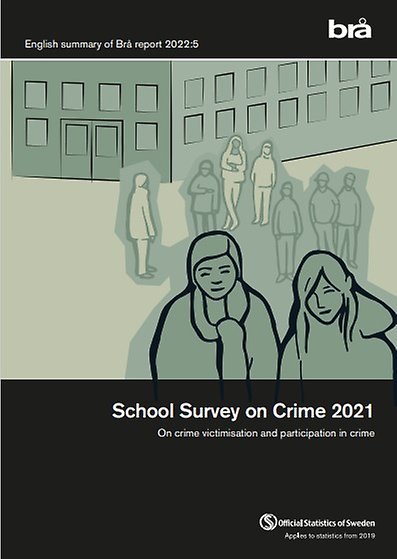
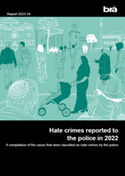
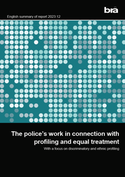
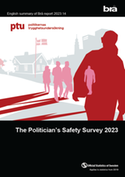
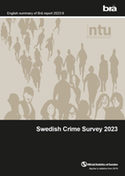
%202023_11_Fraud.png)
